Think Kawasaki and you usually think Z-l000 speed. Power. Performance. King of the road.
It is that image that Kawasaki wants to transfer to the snow as the powerful Japanese conglomerate becomes the first major company to enter the snowmobile market since John Deere unveiled the JDX-8 in 1971.
To let the world know that they have taken to the snow, Kawasaki has entered the snowmobile market with a ferocity that’s apparent in their top of the line Invader.
The brand new Kawasaki-built, from track to windshield—from ski to taillight, Invader 440 transfers the image of the Z from the freeway to the trail.
Simply put, the Invader 440 has power and performance. In pure acceleration tests through the eighth and quarter mile, this liquid-cooled bombshell was the fastest thing we’ve ever ridden. Of the 14 sleds tested this year, the Invader outscored the closest competition by .3 of a second through the eighth and .2 of a second through the fourth. By way of comparison with the past, the Invader was over 2 seconds faster than any 1977 model sled that we tested a year ago. Two seconds go quickly, but in a fourth mile acceleration test, that’s an improvement in performance of over 10 per cent in just one year.

In fairness, there were three high performance trail sleds not tested this year—the Yamaha SRX, the Polaris TXL and the Ski-Doo Blizzard. But we cannot draw conclusions from what wasn’t available to test. Thus, our statement about the Invader and acceleration should stand the test of trail and lake this winter. One other word of explanation. Do not confuse acceleration with top speed. We did not take top speed read-outs this year. Results of our acceleration tests would indicate, however, that picking the fastest 1978 sled, in terms of top speed, is going to be a horse race. SNOW GOER cannot objectively say which trail sled has the fastest top speed over a one or two mile run. But we will say, in the short run, the Invader will eat no one’s snow dust. In the long run, it should be in front of or right beside anything you’re running against. One hint. In your impromptu races on the Invader, get your competition to race from a standing start.
The Invader is extremely well engineered and as a consumer sled is filled with quality features. For instance:
Powerplant: Kawasaki’s liquid cooled twin 440 with 438 actual cc’s, which has 8,000 maximum rpm (Kawasaki does not release horsepower figures), has a unique mounting system. The engine is not plate mounted to the bottom of the frame, but side mounted using rubber torsion biscuits on the left side while on the right side a plate goes right through the magneto cover and crankcase to bolt the engine in place. Normally, engines are mounted to the bottom of the frame and compression biscuits are used. The rubber torsion mounted biscuits mean that the torsion twisted mounts will continually work to repel any force that moves or vibrates the engine. In practice, this means that the engine vibration will be reduced at both idle and operating speeds. Since the rubber torsion mount greatly restricts engine movement, engine alignment problems are nearly non-existent. This side mount also means that the engine can be placed right down at the bottom of the pan for an extremely low center of gravity.
The Kawasaki 438 cc engine is fueled by two Mikuni VM 36’s. Gearing is 21-39. The single tuned exhaust is a three stage cone, developed in racing that provides for a broader power band due to its multi-stage design. Due to the tuned exhaust the torque peak of the drive system is about 500 to 800 rpm below full throttle according to Kawasaki engineers. The exhaust is also rubber mounted which reduces vibrations felt through the engine compartment from the exhaust.
Oil injection: With the introduction of the Invader, Kawasaki becomes the second snowmobile company to offer oil injection as a standard feature. While pulling up to any gas pump, filling up and taking off is the feature of oil injection that you’ll most appreciate, the exact and constant gas to oil ratio is quite an advantage. Oil injection allows a variable ratio that feeds the engine oil as it is needed. For example, at idle the gas to oil ratio is 100 to 1 and at three-fourths throttle, the ratio drops to 25 to 1. Kawasaki’s oil injection shoots oil on the main bearings and downstream of the carb.
Liquid cooling: The Kawasaki method of cooling that engine with water is similar to that used by John Deere and Arctic in the sense that both a radiator and heat exchanger are utilized. The Kawasaki radiator, designed by Kawasaki and manufactured by Toyo Radiator Co. in Japan, is unique and has its own advantages. The radiator is small, weighing only 2.2 pounds and measuring 93/4 in. wide and 5 in. high, and still does an adequate job due to its material and design. The radiator features cross flow. Similar to the radiators on 1977 autos, cross flow simply means that water is channeled across the radiator instead of the conventional up and down, for a better cooling effect. Fins of the radiator are made of a copper alloy and both the tubes and very fine or thin material core are made of brass to radiate heat away quicker.
The radiator is also assisted by a heat exchanger located under the seat in the upper part of the tunnel. The heat exchanger carries coolant from the engine down a two foot passage and then back to the radiator. Each of the two passages are 1½ in. wide. The actual water passages are a fourth inch deep. Total coolant capacity of engine jacket, heat exchanger and radiator is one gallon.
Also assisting to cool the engine and meeting Kawasaki engineers’ goal of keeping the temperature down after 10 miles on ice at 20 miles an hour is what Kawasaki calls positive ducting. Air is ducted in through the hood and around the radiator and then exited through a duct right behind the windshield. The duct behind the windshield takes advantage of the vacuum that is created there and literally pulls hot air out of the engine compartment.
Slide rail suspension: Using a totally new concept in snowmobile suspension, the new Kawasaki design uses rising rate springing achieved through a series of rods and bell cranks that are similar in design to Formula I cars first used in the 1974 MacLaren Fords. All other snowmobile companies use a slide suspension with initially declining rate spring. The Kawasaki suspension through the bell crank, also allows a one for one movement ratio of shock to suspension. If the suspension rises an inch, the shock rises an inch. The advantage of this system is simply a ride that is always cushioned and does not bottom out.
The suspension also has an aluminum rail with the powers of HSLA steel, two helper wheels for marginal snow conditions and fully adjustable torque arms.
Construction materials: The Invader is an extremely well constructed yet light (for liquid cooled) sled. The chassis is made of aluminum and HSLA steel which is a high strength, low alloy steel, presently used in automobiles to pare off weight while retaining tensile strength. The Invader was the lightest of four liquid cooled sleds tested this year. With a dry weight of 398.3 pounds, the Invader was 5 pounds lighter than the Liquifire, 18 pounds under the El Tigre and 71 pounds lighter than the Everest with electric start.
Other worthwhile features of the Invader include the die cast aluminum clutch with its torque sensing cam of the driven located on the inside to allow a low placement of clutch and drive shaft. The Kawasaki drive is similar in design to Arctic’s finger weight clutch.
The lightweight and easy steering Invader is the result of the use of an Ackerman angle which allows each ski to turn on its own radius. In turns, the inside ski would follow one radius and the outside side a longer radius. This method, according to Kawasaki, should provide easier steering since each ski can track at whatever radius it wants.
The Invader’s three piece rubber track is quite thin. Its light weight, according to Kawasaki engineers, is responsible for performance gain since a lot of power is lost in simply picking up a heavy track and setting it down. The track selected, made of Keviar Fiber B, is 30 per cent freer rolling than any other track that Kawasaki tested. The track has rubber cleats and steel reinforcing rods.
The mechanical disc brake is mounted on the jackshaft. Ignition is CDI. The center mounted fuel tank capacity is 8.5 gallons. There are storage compartments both under the hood and at the back of the seat. The fuel pump has an automatic shut-off. The machine can be turned at virtually any angle and fuel will not run out. Kawasaki is also offering a full one year warranty on every part of the sled, including spark plugs.
Outside of speed and acceleration, how well does the Invader perform as a trail riding snowmobile? It is a quality machine and it is sophisticated. Being sophisticated, the Invader will do and perform exactly like you want it to, if you set the suspension up correctly for the type of riding that you intend to do. The front torque arms of the suspension are so adjustable that their positions will have a tremendous effect on ride, steering and performance. For example, Kawasaki had two Invaders at our test site near Cable, Wis. One Invader was set up for trail riding with a great deal of the weight on the skis for precise turns. The other had the weight off the skis, a set-up for drag racing across the lake. We would suggest a medium setting of the suspension for most uses while trail riding. ‘The two extremes of set-up perform exceptionally well when used as intended but will cause you to downgrade the sled when you hit another trail condition. For example, the Invader set up for the trail with weight on the skis handled easily and smoothly, taking hairpin turns with precision while on a tricky trail. But then when you hit a lake and punch it pretty good, the back end will fishtail on you until you’re up to speed. With the weight as far off the skis as possible, the Invader tracks beautifully with no fishtailing on the lake. It is a little difficult to steer on those same tricky trails, however. Thus, we suggest the middle ground for suspension set-up. This is not criticism of the sled. It will perform like you want it to. Adjustments that you make will have a dramatic effect on the ride and performance of the sled.
There is little doubt about it. The Invader is best at speed. Not only is it quick accelerating and fast, but it’s also quite stable and comfortable at those roaring speeds. The sled handles any roughness of trail or lake with ease. It simply glides right over moguls and rough spots reducing them to minor blimps that you hardly notice.
Set up correctly, the sled steers very light and is easy to handle on the trail. The urethane foamed-in- place seat also contributes to a decent, soft ride.

The Invader is one of the most attractively styled snowmobiles that has ever been introduced. Two concessions, however, have been made in the name of styling that may detract functionally from the sled. One is the form of the seat. While the seat is a long 40 inches, the 12 inches at the end of the seat is in the form of a raised area which is fine for the passenger. But, the driver will hit the hump of this rise at 28 inches. Tall riders will appreciate more length before the rise. The other styling concession is the headlight. The dark blue hood of the Invader is extremely stylish and attractive and blends well with the curved smoked windshield. The lines of the hood are sleek and unbroken by a headlight. The headlight is there, all right, but you need to lean over the windshield or walk around the side of the sled and push a little lever and the headlight will pop up. You lift the headlight up a little further and two pins engage the mounting to hold it in place so there is no danger of the light flipping down and lighting the engine instead of the trail.
With an approximate price of $2495, the Invader is a decent top of the line machine that shows that Kawasaki has the expertise to build as strong a name with snowmobiles as they have with bikes.
KAWASAKI INVADER 440
Manufacturer: Kawasaki Motors Corp., USA
P.O. Box 8367
Grand Rapids, Mich. 49508
Model: Invader 440
Suggested retail price (FOB.): NA
Engine
Engine Manufacturer: Kawasaki
Displacement: 436 cc
Number of cylinders: 2
Cooling: Liquid
HP at maximum RPM: NA
Compression ratio: NA
Bore/Stroke (mm): 68 x 60
Carb type and size: Mikuni VM36
Engine position: Front
Snowmobile Specs
Clutch: Kawasaki
Wet Weight (lbs.): 455
Dry Weight (lbs.): 401.5
Fuel capacity (gals.): 8.5
Snowmobile length (in.): 103
Snowmobile height (in.): 35.5
Snowmobile width (in.): 40.5
Ski stance (in.): 31
Suspension type: Fully adjustable slide rail
Ski suspension type: Monoleaf and shock
Track length (in.): 121
Track width (in.): 15
Track material: Rubber
Brake type: Disc
Chassis material: Aluminum and Tungsten steel alloy
Ignition system: CDI
Miscellaneous Dimensions
Windscreen height (in.): 12
Handlebar to seat end (in.): 28 (hump), 40
Seat length (in.): 22½ — 35
Seat width (in.): 14
Footrest (deepest part) to seat end (in.): 49
Seat top to footrest (in.): 15

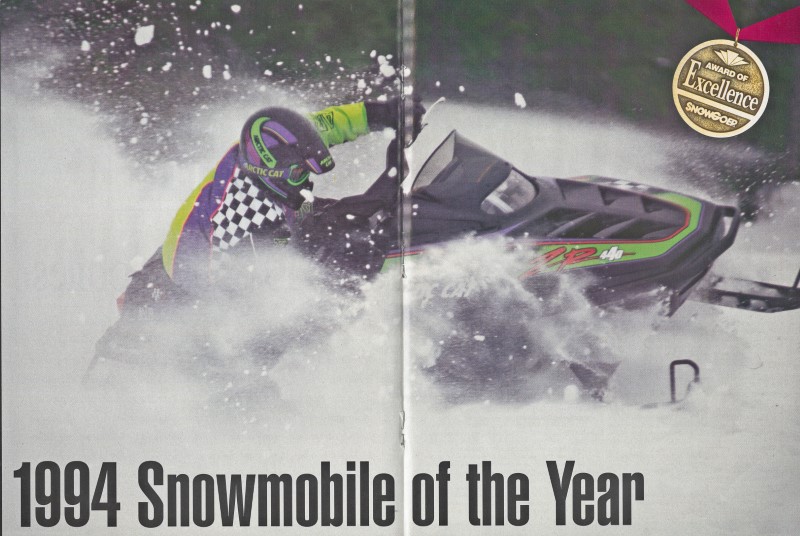
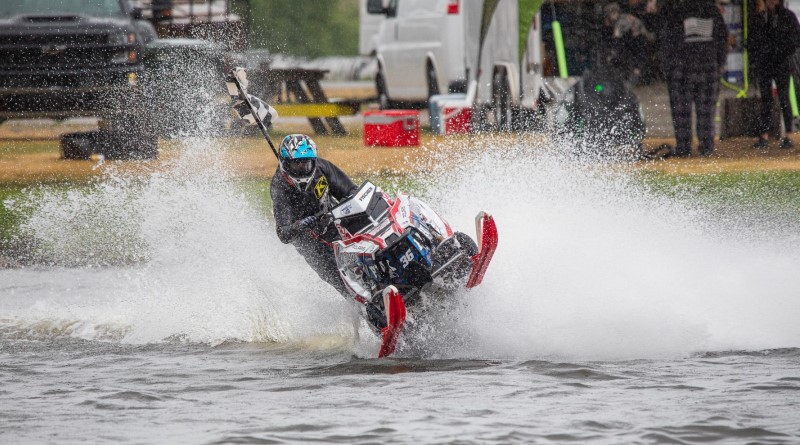
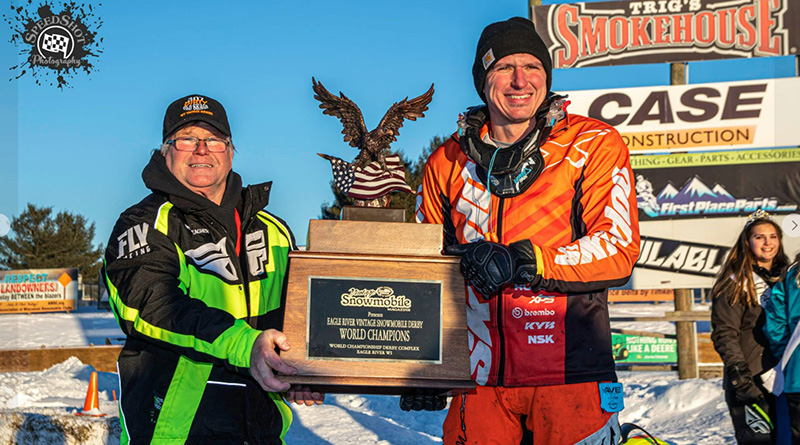
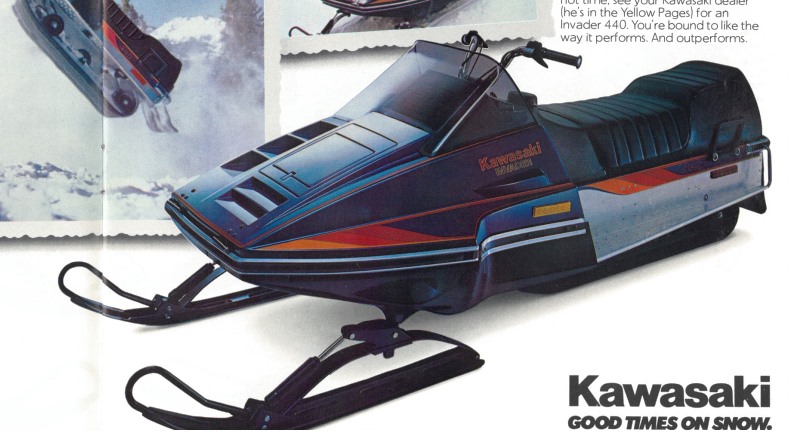
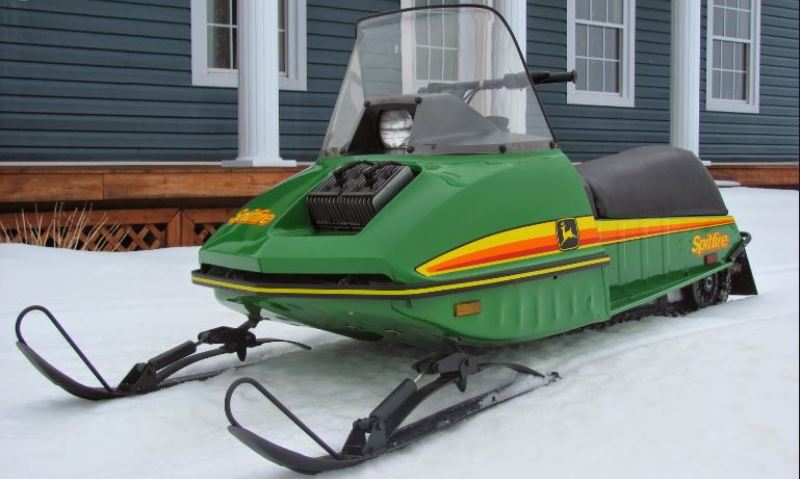
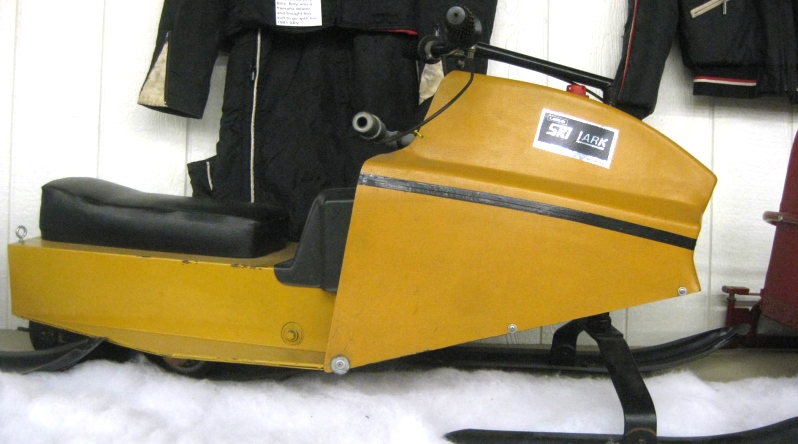
Looking for a working electrical system for1978 kawasaki 440 cc sknowmobile need it all stater cd box coil ext.ext